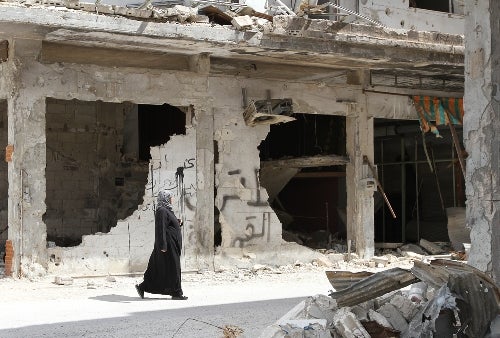 Everyone agrees that conflicts impose huge costs on economies, including massive destruction of infrastructure and housing, disruption of trade, transport and production, not to mention the loss of lives and widespread human suffering. Yet quantitative estimates of these costs are hard to come by.
Collier et al (2003) show that civil wars reduce GDP per capita by about 10 to 15% permanently. The
study uses correlates of war to show that the loss of output during the conflict is around 18%. When it comes to a specific country in conflict, estimates vary significantly.
Everyone agrees that conflicts impose huge costs on economies, including massive destruction of infrastructure and housing, disruption of trade, transport and production, not to mention the loss of lives and widespread human suffering. Yet quantitative estimates of these costs are hard to come by.
Collier et al (2003) show that civil wars reduce GDP per capita by about 10 to 15% permanently. The
study uses correlates of war to show that the loss of output during the conflict is around 18%. When it comes to a specific country in conflict, estimates vary significantly.
Take Syria, where war and violence have interrupted economic activity for six years. The 2017 MENA Economic Monitor report puts the estimated cost of the damages to infrastructure in six Syrian cities at $7.2 billion at 2007 prices, or $41 billion at current prices. A Syrian Center for Policy Research (SCPR) and UNDP report estimates the destruction of physical infrastructure at around $67.3 billion. Other estimates point to different numbers. The loss in GDP relative to the "no war" counterfactual in Syria alone is estimated at $200-300 billion.
The existence of a conflict makes measurement of economic activity problematic. In the absence of hard data, many assumptions have to be made. Consequently, any estimate of the cost of the Syrian conflict or the impact of reconstruction have to be treated as a point estimate with a very wide error band. The size of this error band will depend on the sensitivity of some of the assumptions to the point estimate. To capture this uncertainty, we have developed a simulation tool, Economic Impact Calculator, that enables you, the user, to calculate your own estimates based on your assumptions and knowledge. The tool allows the user to estimate the costs of conflict and economic impact of future infrastructure spending on Syria’s GDP.
The interactive calculator combines data from the World Bank with insights from the economics literature to estimate the economic impact of damages to infrastructure and reconstruction spending in seven key sectors — agriculture, education, energy, health, housing, transportation, and water and sanitation — in six cities of Syria: Aleppo, Dar'a, Hama, Homs, Idlib, and Latakia. The base case incorporates some key economic assumptions: sector based damage ratios, output and spending multipliers, and efficiency of spending. You can change these assumptions to calculate your own economic impact of the conflict and spending under different scenarios. The tool is designed to inform policy makers, scholars, and the general public about the burden of conflict and priorities in post-conflict reconstruction.
Find the Syria’s interactive simulation tool on our visual site: Menaviz.worldbank.org.



Join the Conversation